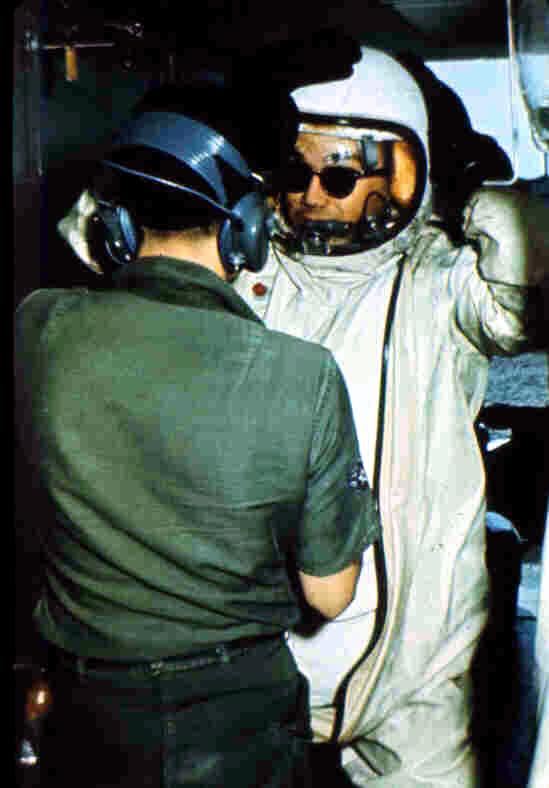Titan II - Originally designated the SM-68B, WS-107B, later designated the LGM-25C. Development approved in October 1959, a large, two stage hypergolic fueled missile. Hypergolic fuels are stored in the missile and ignite on contact, providing immediate response. First intercontinental ballistic missile designed to be launched directly from the silo. Inertial guidance and carry a single Mark 6 Reentry Vehicle with a W-53, 9 megaton warhead. 108 ft long, 10 ft diameter, weight 350,000 pounds, with first stage thrust of 43,000 pounds, range of 9,000 nautical miles. Deployed - Three operational bases, each with two squadrons with nine missiles each, and test facilities at Vandenberg AFB, California. Deactivated - In the 1980s. One complex in Green , Valley, Arizona, is now the Titan Missile Museum. First Flights 16 March 1962 - First launch from Cape Canaveral, successful 6 February 1963 - - First launch from Cape Canaveral by an all Air Force crew, Successful. 28 April 1963 - First successful launch from Vandenberg AFB from silo. |
|
| Basing - 54 Titan II silos in three missile wings for a total of 6 operations squadrons, each with 9 missiles and 9 launch complexes. The missiles in each squadron were scattered over several hundred square miles, with the launch control center (LCC) connected to the missile silo by a tunnel and blast doors. 308 SMW, Little Rock AFB, Arkansas. 381 SMW, McConnell AFB, Kansas 390 SMW, Davis Monthan AFB, Arizona. See Details on all three Wings Here Construction - Construction of 54 launch complexes at three bases was in progress at the same time as construction on the later Atlas and Titan I sites, as well as the first Minuteman sites. Construction began on the first site at Davis Monthan AFB, AZ, began 6 December 1960 and the final site at was completed at Little Rock AFB, AR, on 31 December 1963. |


